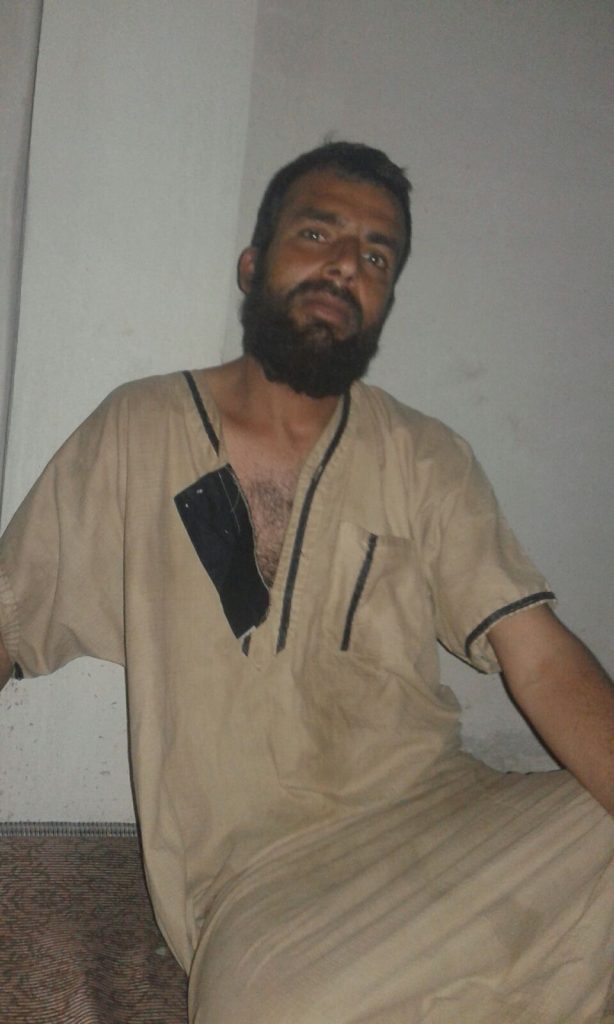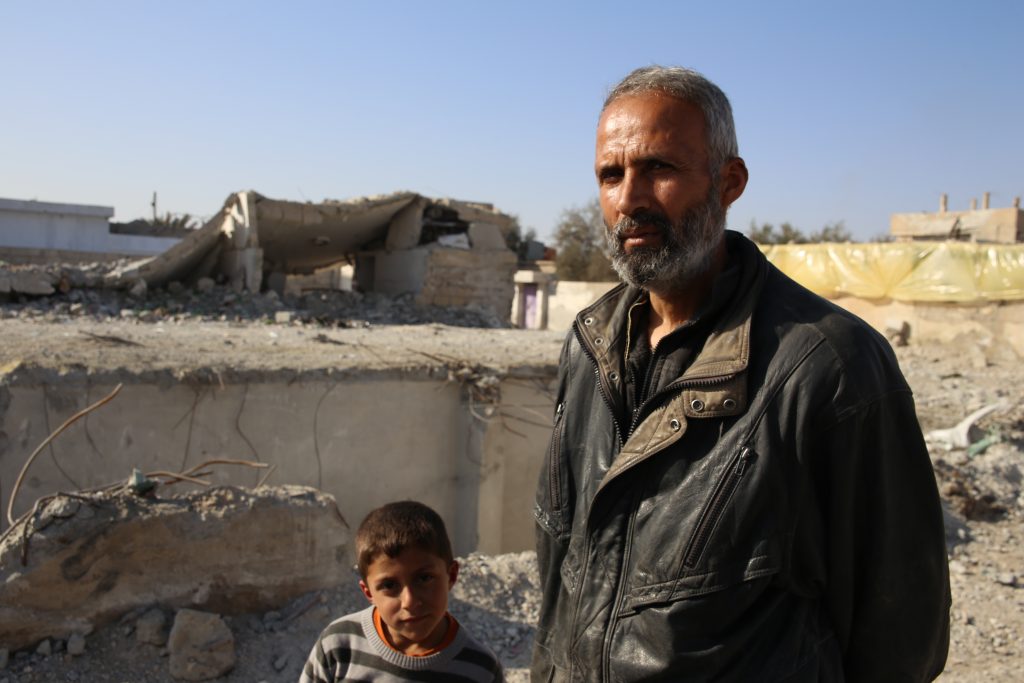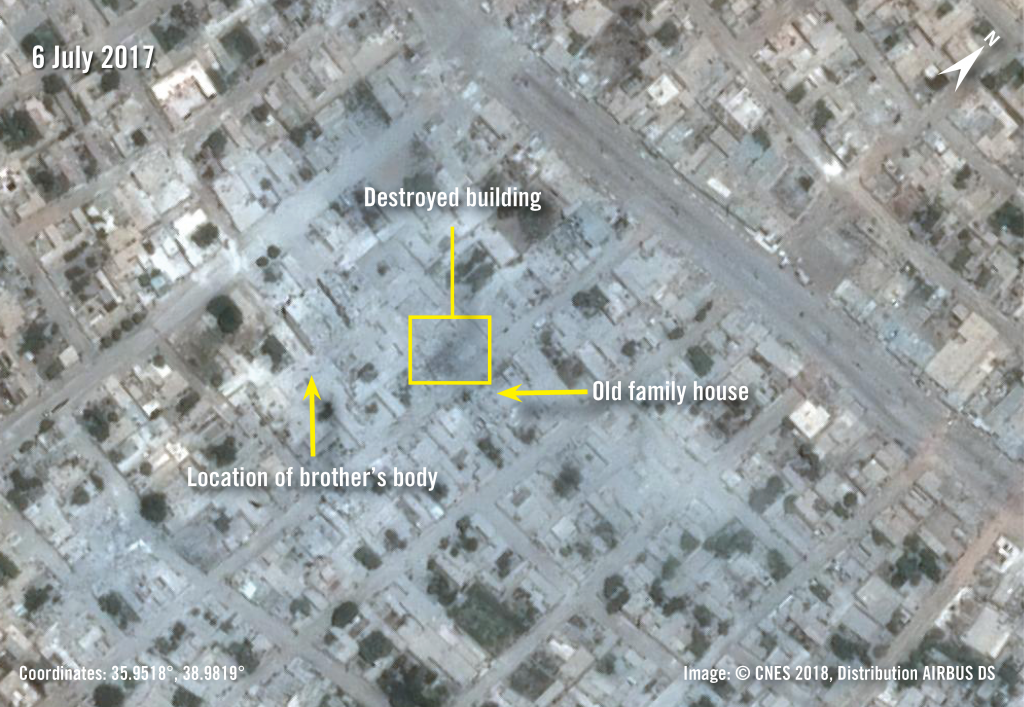Incident Code
Incident Date
Location
Geolocation
Geolocation
Airwars Assessment
(Previous Incident Code: S823c)
An August 2017 Amnesty International report initially stated that a civilian casualty incident occurred in Raqqa on June 8th, killing 6 to 9 civilians – including 1 or 2 women and 3 to 5 children. This was later corrected to June 28th – with the Coalition accepting responsibility for eight deaths 13 months later.
Amnesty researchers had conducted an interview with Mohammed, who had witnessed how the house of Jamal al-Aswad, a food vendor aged 52, was struck just after midnight between June 8th and 9th. The interviewee stated that his next door neighbour had definitely perished in the bombing. “[…] but I don’t know if his wife and children were there not. If they were there they are also dead”, he stated to the field researchers.
At the time of the bombing Abu Mahamud al-Tadfi, his wife and children had also been sheltering in the house of Jamal. All were killed in the event, although Mohammed was unable to identify how many children Mahmud exactly had, but “three for sure”.
Although no survivors were found, Amnesty could not assess how many bodies had been under the rubble.
The later report stated that “On the evening of 28 June 2017, the building was destroyed by a Coalition air strike, killing eight people, most of them children.”
Mohammad al Aswad, one of the survivors of the airstrike, stated that it was around 7.30pm on “the fourth day of Eid” [28 June 2017]. He told Amnesty researchers that they “were about to have dinner. I know the time because my brother Jamal who was down in the basement had just asked how long before sunset, when he could break his fast. Ramadan was over but Jamal was fasting that day to make up for a day when he had not been able to fast due to shelling in the neighbourhood. […] The strike came suddenly. I lost consciousness for a while. When I came around it was dark and I discovered I was wounded in my back and my leg.”
In the days that followed, relatives kept going back to the scene of the strike. One of them, Taha Mohammed Othman, told Amnesty International: “On the Thursday [29 June 2017], three of them were alive under the rubble – Jamal, Amal and Mahmoud. We could only see Mahmoud and we could hear the voices of the other two. Mahmoud kept asking, ‘Where’s my Dad? Where’s my sister? Help me, I want water.’ Amal was also crying for help, although we couldn’t see her. We stayed until the shelling became too close. On the Friday it was difficult to come straight away. There were heavy clashes where we lived. IS kept telling us to move to different places (in the Old City). We asked IS for help to rescue the survivors in the basement but they refused and called us apostates. When we finally made it back to the basement on Friday they were all dead.”
Amnesty delegates later went to the scene of the strike with Aswad family members who brought fragments of two munitions: part of the motor of an AGM-114 Hellfire missile and a fin from a US-designed Joint Direct Attack Munition (JDAM), a GPS-guided air-delivered bomb.
Raqqa – Reporters Without Borders also mentioned eight civilians killed “in a reported Coalition strike” but this was only after the publication of the Amnesty report.
In July 2018 the Coalition conceded responsibility for the event, noting: “June 28, 2017, near Raqqah, Syria, via Amnesty International report. During a strike on reported Daesh headquarters and fighting positions near a residential area allegedly caused civilian casualties. Eight civilians were unintentionally killed.” The Coalition provided Airwars with the location of this incident, accurate to within a 100 metre box.
Victims
Family members (1)

Family members (7)




Key Information
Geolocation Notes

Building in which members of the Aswad family were killed seen on satellite imagery before the strike on June 2, 2017 (via Amnesty International)

Building in which members of the Aswad family were killed seen on satellite imagery after the strike on July 6, 2017 (via Amnesty International)
